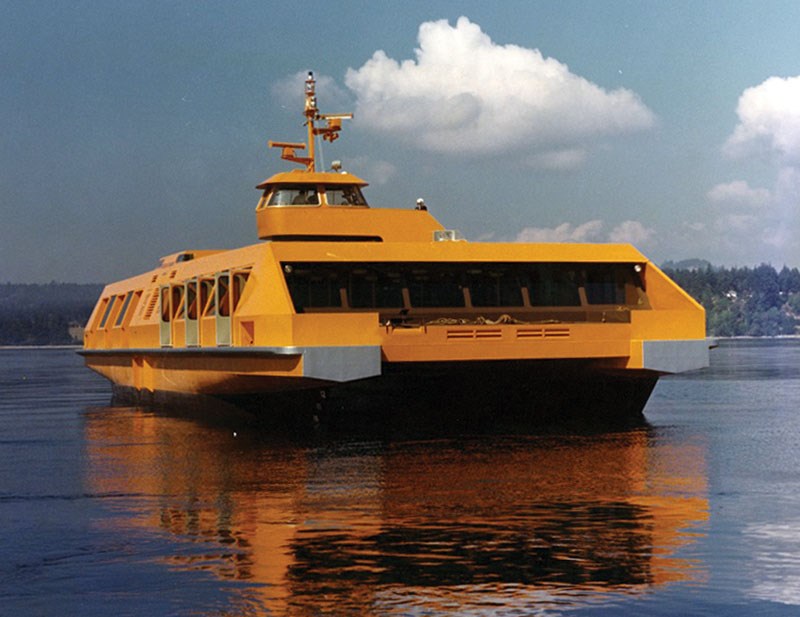When Joe Lutz made his first crossing of Burrard Inlet as captain of the SeaBus, the tallest building on the Vancouver skyline was the Marine Building.
Now, 40 years later, he has to peek between skyscrapers to catch a glimpse of the 22-storey Art Deco office tower that was once the tallest building in the British Empire.
From the wheelhouse of the Burrard Otter and Beaver, the Pacific Breeze and the Burrard Otter II, Lutz has been witness to four decades of change while making untold thousands of trips across the Inlet with passengers below.
“It’s changed quite a bit. The harbour used to be a lot busier than what it is now,” he said. “You had tow boats going left or right. … You could see pretty well to (Lynn Creek.) In North Vancouver, there was nothing. ICBC wasn’t there.”
Lutz was one of the guests of honour at a ceremony held Wednesday to mark the 40-year anniversary of the SeaBus entering service on June 17, 1977.
The first regular ferry service across Burrard Inlet in the 1860s was in “Navvy” Jack Thomas’s rowboat. Various commercial and government owned steamships later began serving Lower Lonsdale, Ambleside and Dundarave, shuttling passengers to Granville.
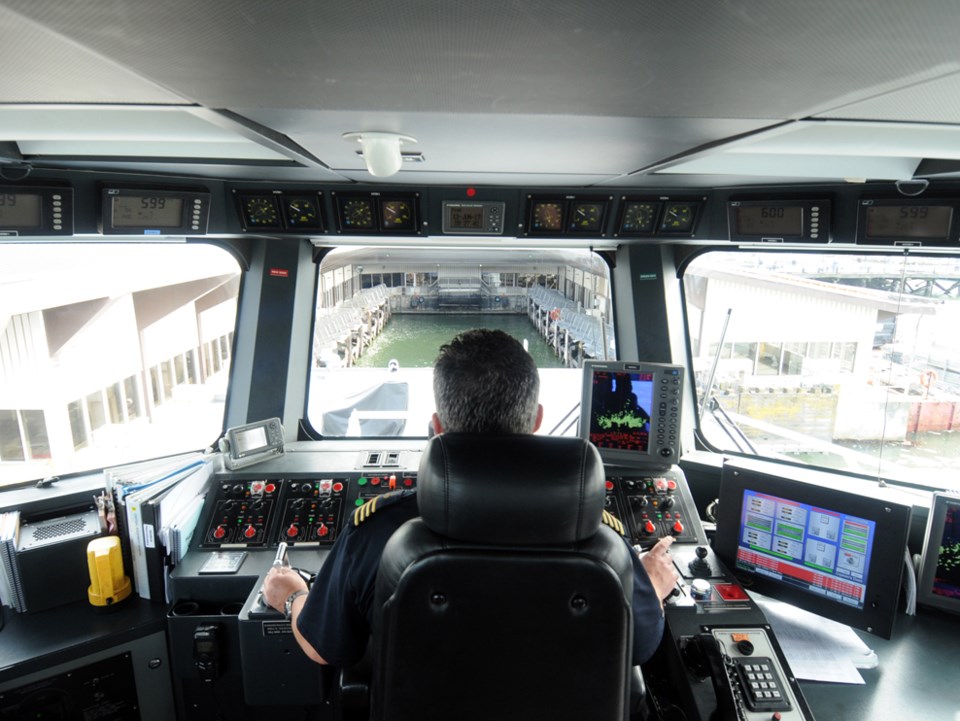
In 1908, the City of North Vancouver took over the North Vancouver Ferry and Power Company and its two ferries. Over the years, the fleet expanded to five boats.
The North Shore got its first road access via the first Second Narrows bridge in 1925. The completion of the Lions Gate Bridge in 1938 was a major catalyst for car travel to the North Shore.
According to Capt. James Barr’s 1969 book Ferry Across the Harbour, cross-inlet travel peaked in 1943 with more than 7 million passenger boardings, thanks in large part to the humming shipyards on the North Vancouver waterfront.
But in the post-war years, car travel grew in popularity, and the ferries lost customers. The North Vancouver ferries even offered after-work cocktails for sale to woo customers back but the last ferry ran in 1958, the same year as the collapse of Ironworkers Memorial Second Narrows Crossing, which would be completed and open with six lanes in 1960. (Ferry No. 5 later became the Seven Seas restaurant and kept its home at the foot of Lonsdale until it too was scrapped in 2001.)
Traffic on the two bridges quickly became congested, leading to calls for a third crossing in the 1960s. But the notion of another bridge or tunnel to Vancouver met the same roadblock then, so to speak, as it does today.
The City of Vancouver was unwilling to redesign their downtown in order to accommodate the freeway infrastructure needed to handle more vehicles.
“What we didn’t want to do was end up copying what had happened in Seattle with the ribbons of highways that crisscross the city. The idea was to try to keep the city in scale and not let the car dominate,” said Don Bell, who was an alderman on District of North Vancouver council at the time.
The province estimated a third crossing would cost $200 million, but no level of government was willing to put up the money and plan was scrubbed. An editorial in the North Shore Citizen quipped, “At this point, one might expect the second coming before the third crossing.”
A rapid transit ferry system could be done at a fraction of the cost and provide the passenger equivalent of a two-lane bridge, the province estimated, and Dave Barrett’s NDP government gave it the green light in 1974.
Although he was initially in favour of a double-decked Lions Gate Bridge and tunnel under Stanley Park, with 40 years of hindsight, a passenger ferry was the right decision, Bell said.
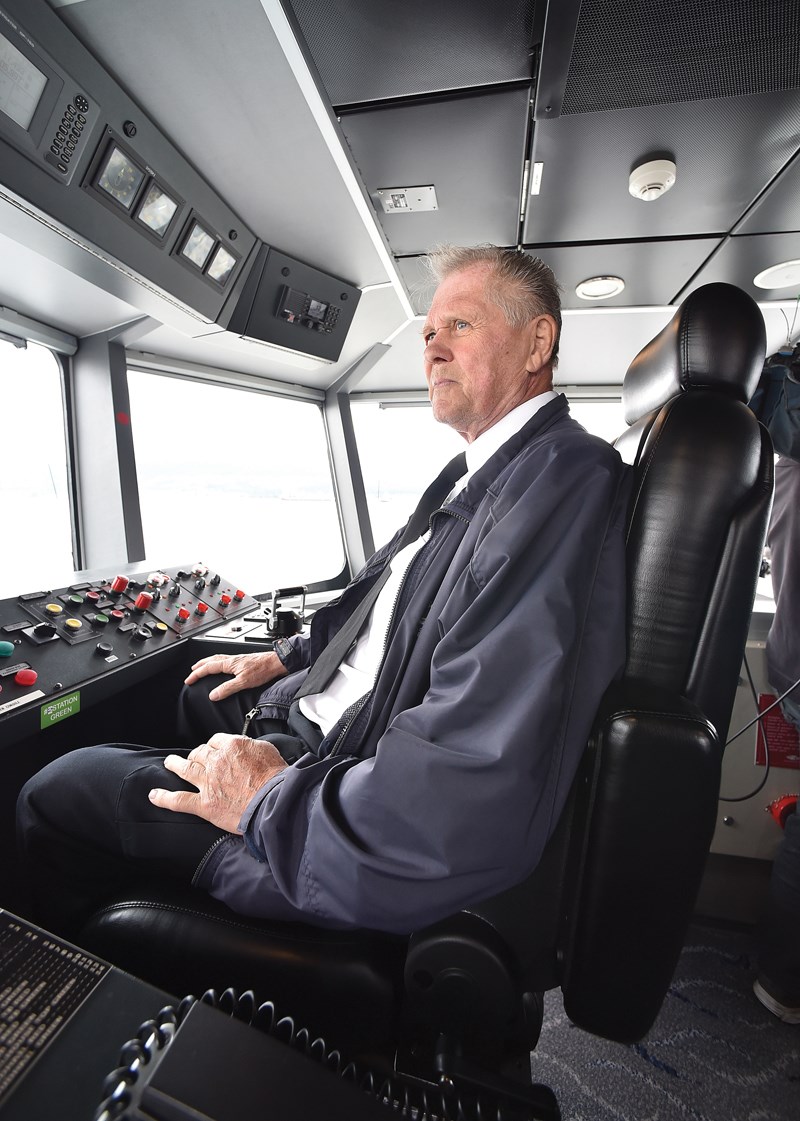
“It really dealt with what was the issue, which was do we want to move people or do we want to move cars?” he said. “When the SeaBus came a long, it was an environmentally responsive or satisfactory solution to moving people who were just coming to Vancouver for their jobs.”
Although the project was continued by Bill Bennett’s Social Credit government, it still faced some rough seas in the early days, including from the City of North Vancouver’s Mayor Tom Reid.
“I’m just concerned if it will be used or not,” he told the Province newspaper, which had referred to Reid as a “bitter critic of the ferry plan in the past.”
Reid said he was “disgusted” to learn in the middle of a council meeting that the province was planning to expropriate a number of lots of waterfront land for a ferry terminal. The city was already in negotiations to rezone those lots for commercial development.
The Port of Vancouver’s manager Fred Spoke told Vancouver city council the ferries wouldn’t be allowed in his harbour unless the port authority could be assured there was no risk to the ships carrying oil and chlorine. Spoke said he only became aware of the proposal through the press and hadn’t been consulted by the province.
Victor Hodson, an executive in marine and transportation consulting, published an op-ed in the Province predicting the ferry service would fail, as it would be threatened by winds and tides, unco-operative bus drivers overloading and overwhelming the SeaBus and passengers being put off by inconvenient access to other transit at both ends.
“If ever there was a $46-million, 60-day wonder, this is it,” he wrote.
Nonetheless, the design contract was awarded to Case Existological Laboratories in Victoria.
Naval architect Jack Case travelled to England to study a similar ferry system on the Thames that had failed, in part, due to constant break-downs.
“I had a lot of experience designing a lot of boats of different types and I felt that the only way this was going to be successful was if the reliability (was) excellent. We can’t have things happening constantly that means we have to pull one of the ferries out,” he said.
He came up with the double-ended catamaran, allowing it to sail in both directions without turning around, featuring four independent engines capable of rotating 360 degrees, making the boats highly manoueverable in a tight space. He also designed the terminals so the ferries could load and unload very rapidly – “400 people in 35 or 40 seconds,” he said.
It was the connection of the SeaBus that led to the renovation of Canada Pacific Railway’s waterfront station, which was previously targeted for demolition. That station later became home to the first Starbucks outside of Seattle, 10 years later.
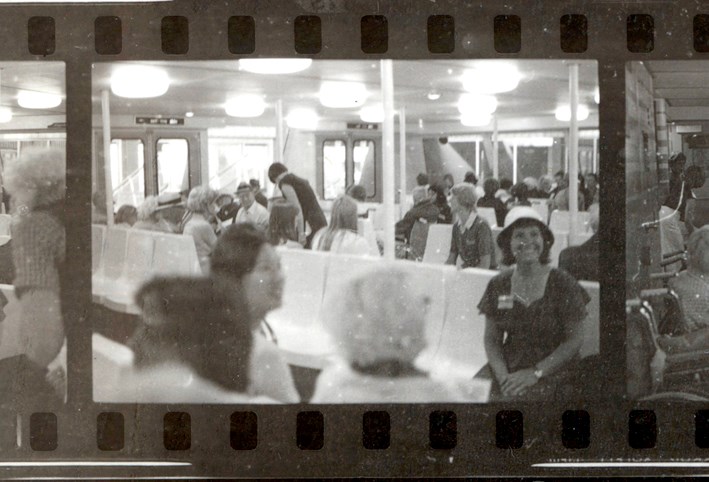
The first pilots, including Lutz, were trained on a one-eighth scale replica with controls mimicking the propulsion system on the real thing and a miniature mockup of the SeaBus terminals to dock at.
The actual terminals have only one inch of clearance on either side but the pilots are able to guide themselves in from a distance using the long “fingers” of the terminals as a reference.
“It works pretty slick,” Case said.
Case was another of the guests of honour for the 40th anniversary party held for dignitaries on Wednesday. Case said he was proud of the design and proud of TransLink for their running of the system.
“I think TransLink has done a fantastic job considering everything that’s happened since the initial effort. I think they’ve done a remarkable job of keeping the figures up high and transporting a lot of passengers safely. They should be very proud of themselves,” he said.
Case said his only regret was not patenting the SeaBus design.
The Burrard Otter and the Burrard Beaver made their grand entrance into the harbour on Feb. 11, 1977, led by a fireboat shooting plumes of water into the air and escorted by a flotilla of tugs. The vessel’s design wasn’t to the liking of some purists, nostalgic for the ferries of yore. An editorial in the Victoria Daily Times critiqued their look.
“Undoubtedly, SeaBus will carry executives and their secretaries from their jobs in downtown Vancouver office towers capably in sterilized silence. ... But where’s the open deck, the opportunity to snatch a whiff of salt air? It resembles a ferryboat about as much as it does a subway car,” it read.
In the weeks leading up to the launch, the BC Hydro Transit, which ran the transit system at the time, ran an ad campaign advising “How to win at the game of bridge,” urging drivers fed up with traffic to take the more direct route.
Municipal Affairs Minister Hugh Curtis held a naming contest to see what the new service should be called, drawing a massive response, many of them acronyms not fit to print.
B.C. Conservative leader Scott Wallace suggested it be called Curtis’ Regional Aid to Pedestrians, or CRAP. The Vancouver Bicycle Club members, angry that they wouldn’t be allowed to bring their bikes aboard, suggested the Burrard Area Rapid Ferry, or BARF.
Ultimately they chose SeaBus at the suggestion of North Vancouver resident John Gough. Gough was made commodore for the day at the ribbon cutting and given a lifetime pass. The rest of SeaBus’s passengers had to pay the 35-cent fare, which was fed into a Videmat machine that essentially photocopied the coins and printed them out on a ticket stub that could be used as proof of payment.
“One thing we used to do was pay with pennies,” said Connie White, who skipped out of her Grade 7 classes at Queen Mary School for the opening day. “Our transfers used to be about four feet long. I’m pretty sure we are the reason they changed it all. The drivers used to get mad.”
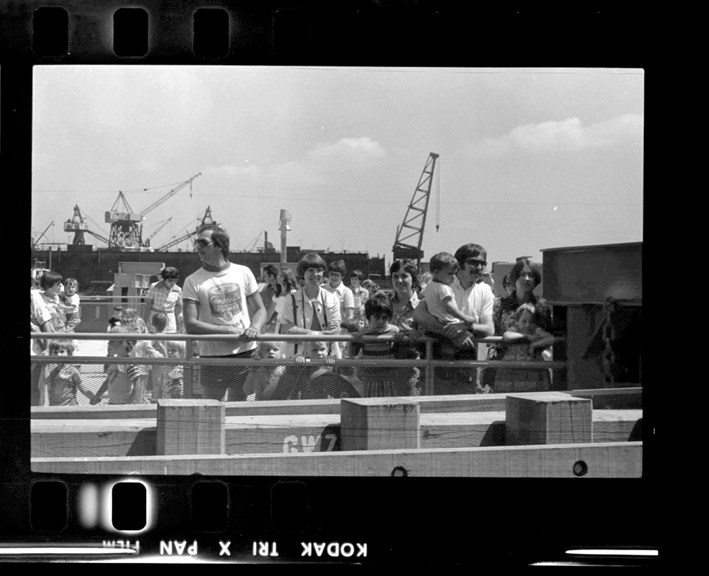
At its first sailing at 6:15 a.m. on June 17, the SeaBus had 168 souls aboard. It hit a total of 50,000 by the end of the day. Newspapers the next day published the comments of drivers indignant to find there were still traffic jams on both the Lions Gate and Second Narrows bridges.
Prime Minister Pierre Trudeau came for a spin a few weeks after the grand opening, paid for his ticket and then hopped the turnstile into the terminal.
“It’s a great way to transport people,” he told the Vancouver Sun. “Far better than a steel and concrete bridge.”
North Vancouver residents and tourists alike also found the novel new ferry appealing.
Garry Webster, who used to fish under the SeaBus terminal, decided he and his friends would try to talk their way up to the wheelhouse one summer afternoon.
“We hadn’t thought through our plan too well. When we asked to get upstairs they said that only employees could go up. It was then that I said that we knew the captain,” Webster said. “‘Oh yeah?’ said the employee. ‘What’s his name’? To which I replied, ‘Captain Seabus.’ And so we rode the trip across the harbour from the wheelhouse.”
News columnists of the day predicted big changes for North Vancouver would come as a result.
“Over the next few years new housing developments that might otherwise have spread all over the North Shore are likely to be concentrated within walking distance or a short bus ride of the Sea-Bus terminal,” wrote Province city hall reporter Nate Smith in the days after. “In fact, don’t be surprised if Lower Lonsdale winds up looking like the West End someday.”
Marketers for the Talisman Tower at Second Street and St. Georges Avenue used the promise of an easy commute downtown on the SeaBus in their sales pitch for two-bedroom condos (which were listed for $48,000).
While it may not be the West End, the SeaBus’s arrival was a turning point for North Vancouver, said city Mayor Darrell Mussatto.
“We’d have been stuck with two bridges. The bridges would have been at gridlock many years ago without the SeaBus. The SeaBus has been critical to us on our path,” he said.
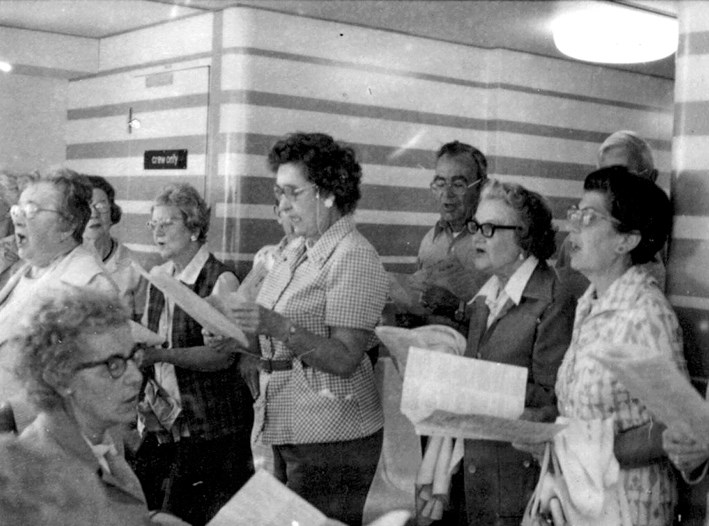
Asked what Lower Lonsdale would look like today had there never been a SeaBus, Mussatto said there would be probably more surface parking, gravel lots and maybe a smattering of restaurants, but not the commercial, residential and transportation hub we see today.
“I think it would have been a lot like the Lower Lonsdale of old,” he said. “It was not a place people would go to. It was a place that people would stay away from. Once the SeaBus came, we started to change the transportation patterns on the North Shore. We started getting people taking the buses to the Quay and then commuting over to Vancouver.”
Most of naysayers’ predictions proved to be bunk. Between 1989 and 2015, passenger boardings on the SeaBus went up by about 53 per cent, to 6,092,000 in 2015.
It’s a running joke among TransLink staff that the SeaBus is cancelled or running late. It boasts 99.99-per cent on-time performance. In 2016, there were only nine cancelled sailings out 44,200, most of them related to medical emergencies, mechanical issues or the RCMP requesting a sailing be halted so they could intercept a suspect trying to use the boat as a de facto getaway vehicle.
In 2015, transit police shut the service down after someone noticed a suspicious package with wires coming out of it left beneath one of the seats. The apparently unfamiliar device turned out to be a long-obsolete Walkman. In 2010, just before the Vancouver Olympics, there was a similar bomb scare. The bomb squad arrived and detonated someone’s forgotten fishing pole.
In March 2008, the SeaBus was commandeered by pirates, or at least, people dressed like them. It was the work of activists with the Vancouver Public Space Network, aiming to get people making fun uses of their transit system.
Jason Vanderhill, a self-proclaimed transit freak, was there that night.
“It was amazing. This was sort of the dawn of flash mobs. It was a very successful exercise. All the pirates converged. They all boarded the SeaBus and it was just a fantastic, musical, fun-filled journey across the inlet,” Vanderhill said. “Much to the surprise of everyone else who as caught up in it.”
The SeaBus has also been a creative muse of sorts. At least two bands hailing from the North Shore adopted names inspired by the SeaBus’ doors. In 1980, No Exit released what is regarded as the very first punk album recorded in Vancouver. In 1996, Exit This Side hit the scene.
Exit This Side bassist Sean McLaren said the SeaBus door signs were seen as a metaphor for young people on the suburban North Shore.
“Being a teenager high school kid in North Van, you’re sort of isolated from the rest of the world and the SeaBus was our means to get downtown and get to the outside world.
That was one of the reasons why the name stuck and we really liked it,” he said.
Mussatto has since revived the idea of building a third crossing of the inlet, albeit with a twist. Earlier this year, he asked TransLink and the province to begin studying a light-rail tunnel under the inlet that could make the crossing in about three minutes. The idea, however, is a long, long, long-term vision.
For now, Mussatto said, he’s just eager to see SeaBus service frequency increase, which is now on the horizon. At the 40th anniversary celebration, TransLink CEO Kevin Desmound announced that the transit authority had awarded the contract for construction of the latest SeaBus in the fleet to Damen Shipyards Group, a Dutch firm that built the Otter II, at its Singapore shipyard.
Once it’s delivered in 2019, rush hour service will go to every 10 minutes, something that has been part of the original plans since 1975 but never delivered due to lack of funding.
When the new SeaBus hits the water, it will likely go through a public naming contest according to TransLink, but Lutz probably won’t be there to pilot it on its maiden voyage.
“I really enjoy working on the water and transit’s been fantastic me. … I think it’s time to go retire now. It’s been 40 years. Maybe I’ll finish off this year,” he said with a laugh.

